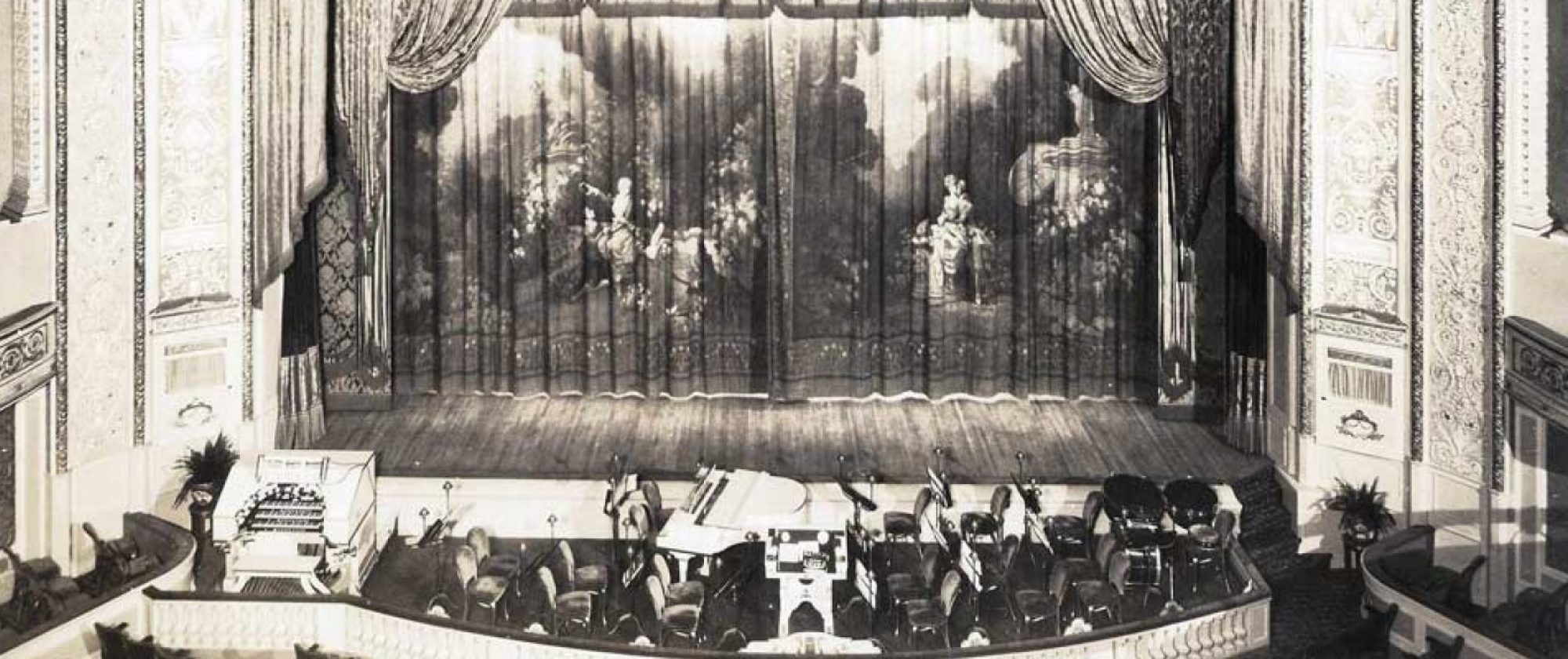Eddie Hefferman’s singing drew attention, especially, “Winds,” when the girls were most tastefully frocked. The choristers, by the way, are all good dancers and cleverly coached. There are some changes, notably the absence of the verse billing and perhaps its use. All is calculated to lend speed to the act and that attained. “This and That” is a novelty and is pretty sure of providing a pleasing feature anywhere.
The sparkling personality of Miss Tilton flashed throughout Mento Moore and Macklin Megley’s “Chameleon Revue.” Her songs were amusingly done and her mimicry drew giggles.
“Extra Dry” was next, while Grace Nelson with her single singing turn was No. 4. Her first group of numbers went along nicely enough without any tumultuous response from the audience, but “Eli, Eli” at the end brought a storm of applause from the Seventh avenue clientele. Miss Nelson gets some striking effects with her vocal fire works, although her operatic number was pretty heavy stud.
They continued to walk out on so excellent an act as Fred LaFrance and Joe Kennedy’s new vehicle. “The Patty of the Second Part,” as funny a blackface duo as any of them. The situation of a “wise coon” fight promoter explaining the complications of a fight contract to a bonehead ducky pug has endless possibilities and they make the most of it. The exchange of talk about signing of the “black hope” with a wild man from Michigan who has only knocked out a dozen topnotchers “always by accident” and the stupid reluctance of the lazy coon is screaming comedy. But the audience had been killed off.
William B. Friedlander’s “Extra Dry” has all that an entertaining half hour could be expected to deliver in lively numbers, tuneful score and engaging stage pictures and, having the first try at the thirty-minute style of number entertained thoroughly. The piece moves swiftly with its catchy lyrics and capital dances, but it could be made to set a good deal faster pace if the dialog were cut sternly down to a minimum. Such numbers as the “Scandal,” song need no leading up to. The talk and “bit” between the school mistress and the bellboy was funny, but the rest of the lines could be scrapped and the numbers and dance could stand on their merits. They have “Production class.” The “plot” of the piece rather cheapens them than sets them off.
Beatrice Herford followed adding to the comedy score. Miss Herford was out of vaudeville for a time last season, going into the legitimate with “What’s in a Name.” With that attraction still to {illegible}, she is back in the two-a-day and mated word pictures or perhaps more properly closed as characteristically cameos, found a new addition. It was “At the telephone pay station,” the gal with the plugs doing the chattering. Miss Herford also gave her more familiar but always amusing. “At the Matinee,” “At the Five and Ten Cent Store” and “The Little Boy in the Street Car.”
“The Creole Fashion Plate,” now also billed with his own name, Karyl Norman, was a holdover and he ran Leonard a close second. This new headliner ranks as the finest female impersonator developed in a decade. Norman has class, clothes and the ability to deliver songs. The latter feature aids the impersonation perhaps more than his dressing and there were plenty present who were fooled despite the repeat date. His natural voice is in itself unusually pleasant; his falsetto well modulated and never blatant. Besides, in carrying forth the illusion, he has most of the little feminine tricks – and the women are quick to note that. Norman’s Spanish song is the best dressed number, It is a toss up which melody he sings best – “Daisy Days” or the pick lullaby “Bye-Lo,” the final encore and taken from last season’s routine. He is a sure favorite wherever he will appear and his readlines to respond is going to win him a flock of friends.
Yvette Ruget, with a pianist opens with a well arranged introductory medley which, including bits from “Gianina Mia,” “Peggy,” “Nobody Knows,” “You’d Be Surprised,” and “Sweet Summer Breeze,” neatly blended. Her clear enunciation, “temperament” and top notes put her over in good shape. One of the little Wilton Sisters, separated only by intermission entered into competition with Miss Rugel for vocal honors. Both the girls have well trained voices and harmonize musically and effectively. Their fully rounded tones have fine, mellow maturity.
“The Little Cottage” is a tabloid with a pretty set, 10 girls, two men and a leading woman. It has been playing about some time and is in good shape. There is feminine sartorial display, the girl numbers alternating with singing and comedy.
It is an unsatisfying program. The big readline act is Valeska Suratt is a disconcerting melodramatic sketch replete with underworld slang. It is real, old-fashioned melodrama, with the old-thing. As an exemplification of cave-man drama it is unique. Miss Suratt orates and intones a la Ethel Barrymore. Some years have passed since we had anything so stirring in vaudeville. In less than half an hour we have the “meat” of a full evening’s red-blooded underworld melodrama, so why sit through two and a half hours to get what can be dished out in one-fifth the time?
